Over on Fitocracy, we're having an Iron Chef Apple challenge. This is my entry.
This is based on the Basic Sourdough recipe from Peter Reinhart's Bread Baker's Apprentice. BBA also contains the instructions for making your very own sourdough starter particular to your local environment.
Start with a mixture of 45% hard red wheat, 45% hard white wheat, and 10% rye. Mill fine. (Alternately, any combination of unbleached bread flour, whole wheat flour, and rye flour that you like, just maintain the 10% rye ratio by weight.)


Take a few ounces of your sourdough starter, and mix in an equal weight of water and flour. Let it rise covered for 5-8 hours (it will double roughly), then put in the fridge overnight.

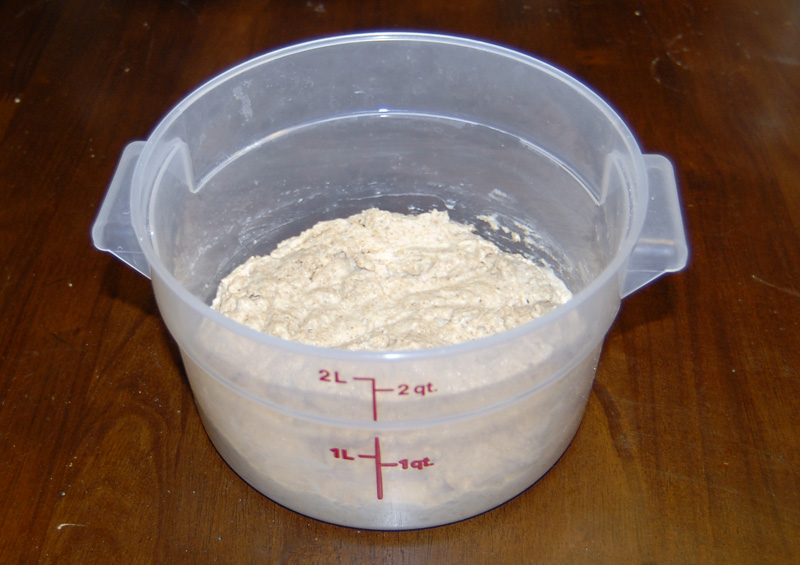
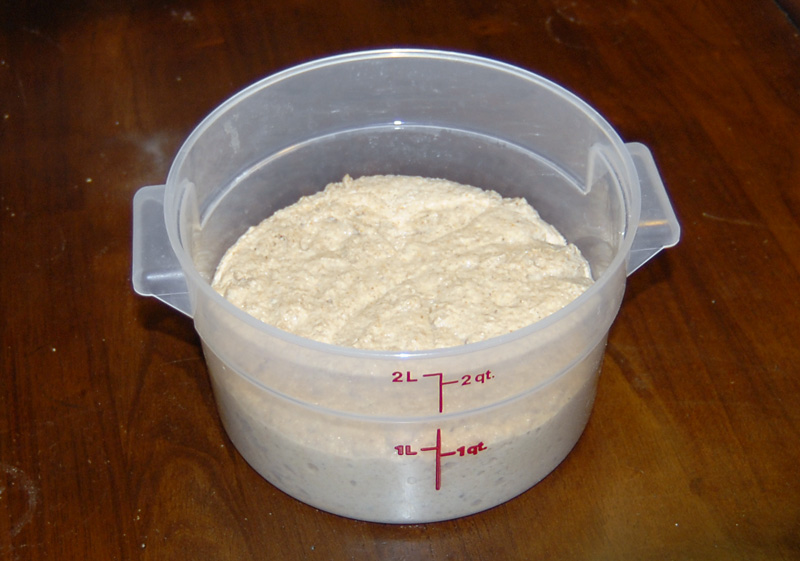
Dice up 3-4 apples. I used three Braeburns and a Granny Smith. Also weigh out 5 oz. of pistachios and 4 oz of blue cheese. Chop the apples up last, as they'll immediately start to oxidize and turn brown.

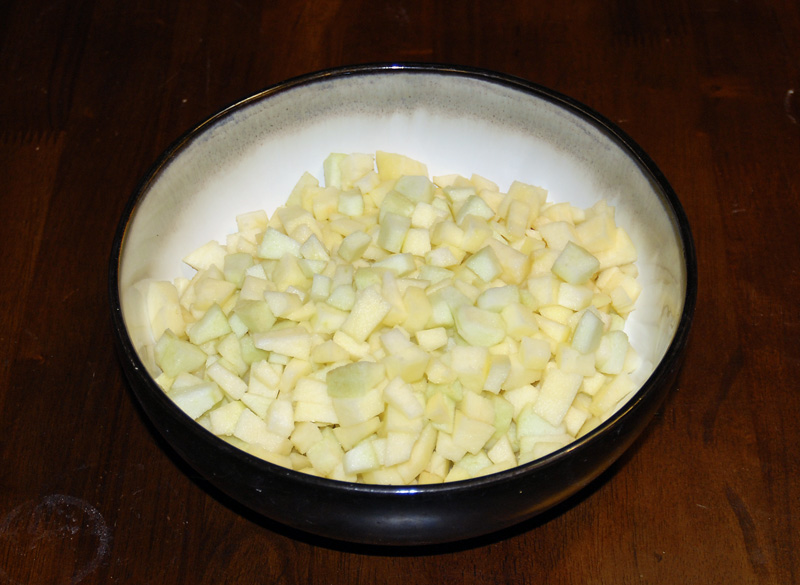
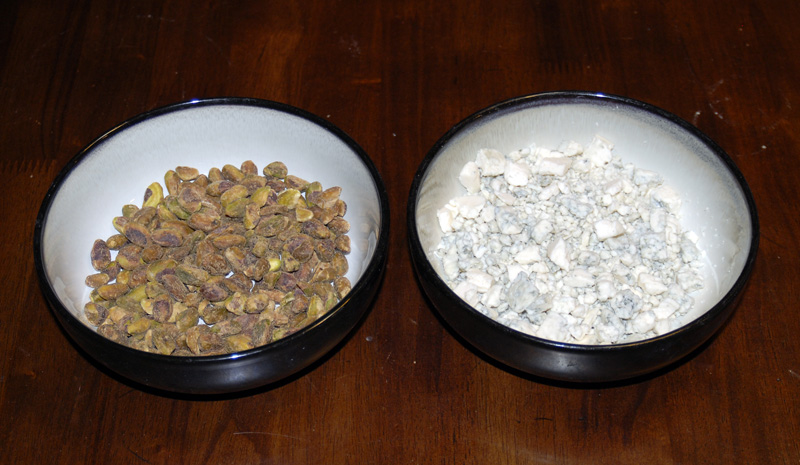
Add the water and preferment to the mixer and start it up.
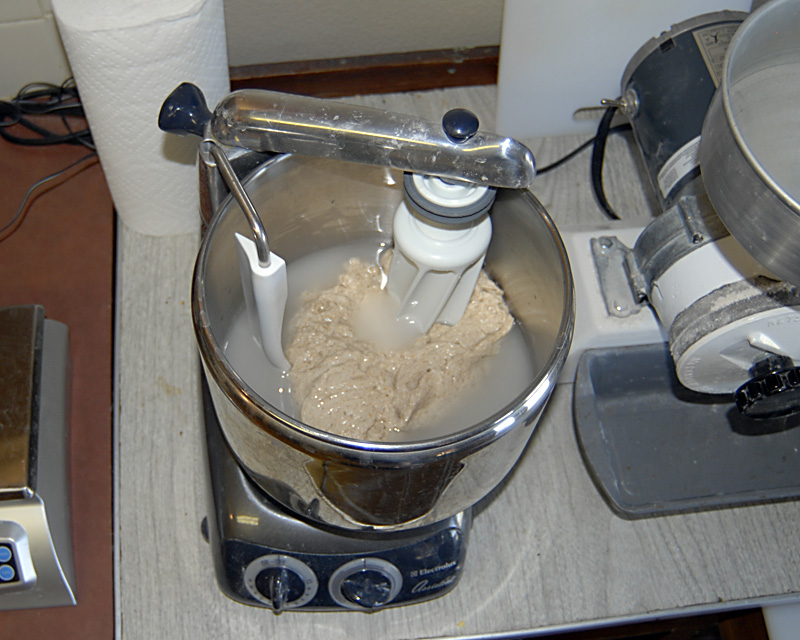
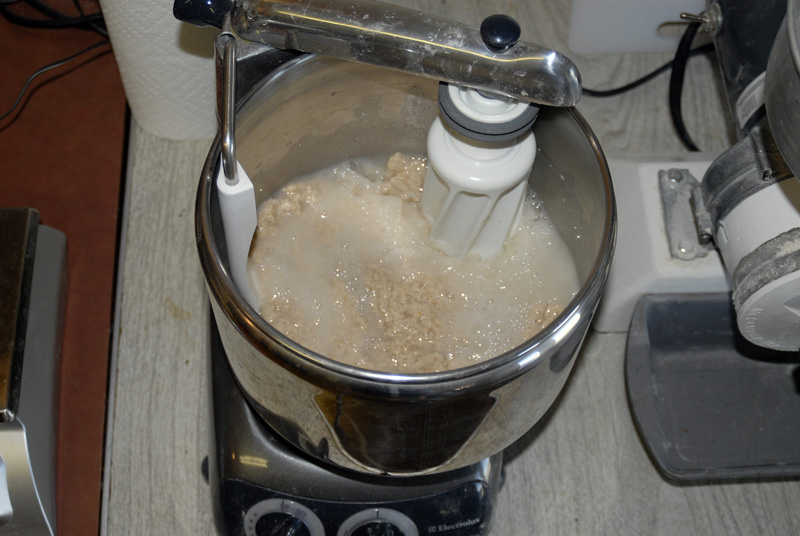
Alternate adding the apple and your flour until all the apple (and about 2/3 of the flour) has been incorporated, then alternate adding in the pistachios and the rest of the flour, adding the blue cheese at the very end.

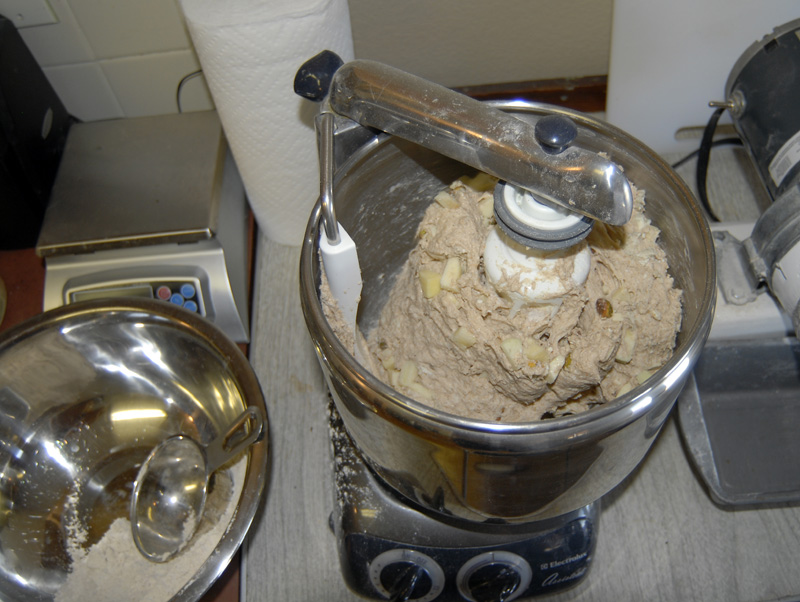
Turn the sticky mass out onto a well-floured cutting board and, using a dough blade and your hands, continue to knead and incorporate flour until it forms a fairly stiff, non-sticky dough.
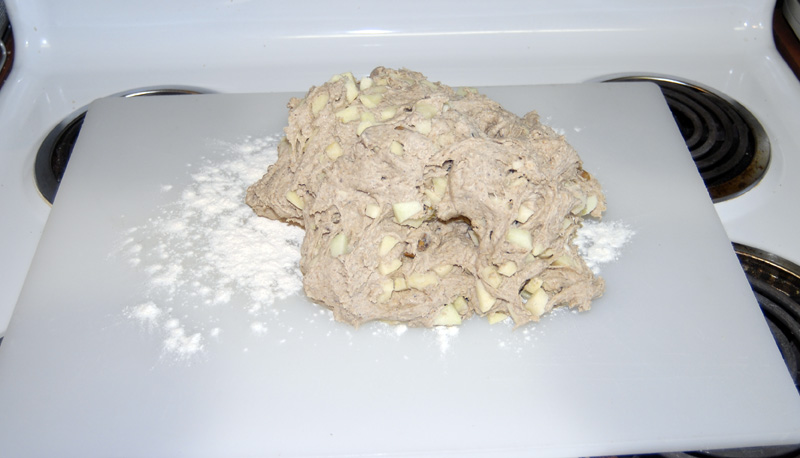

Put it in a large bowl or tub and let it rise for 4-6 hours, until nearly doubled. Refrigerate overnight.
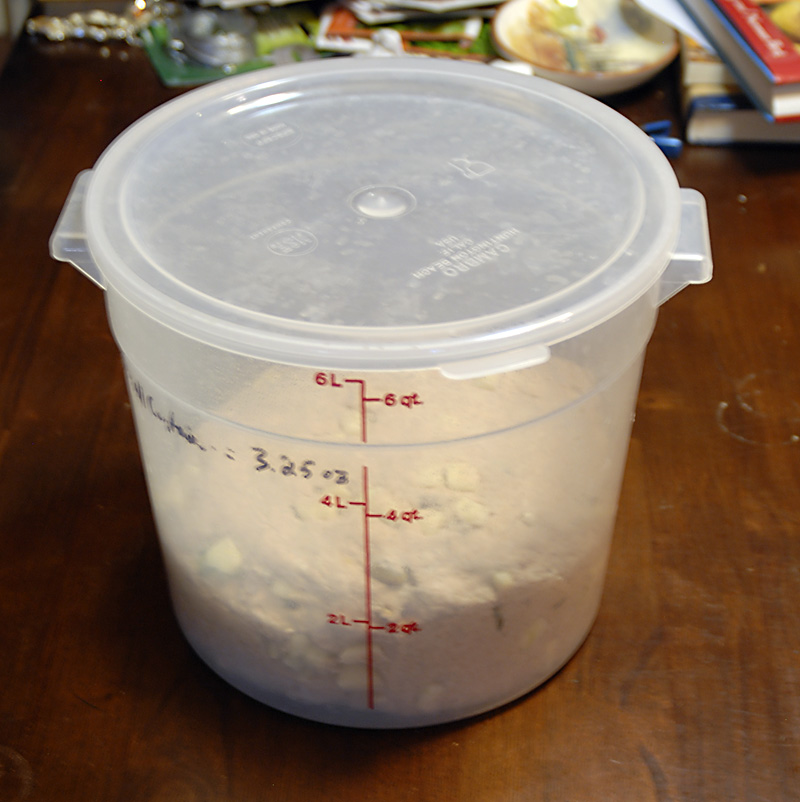
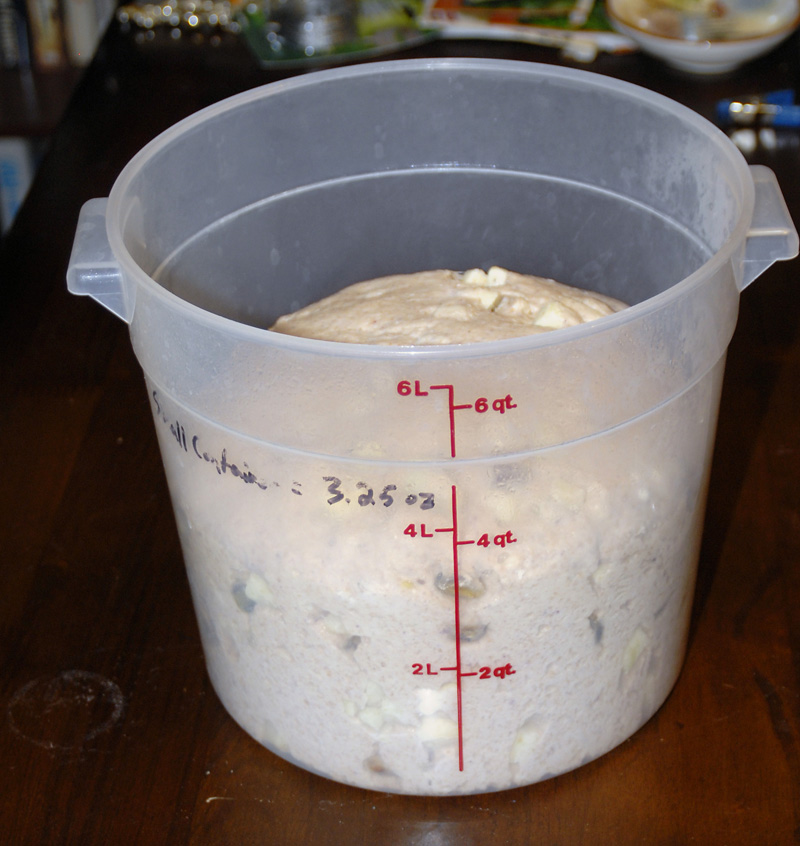
Remove the dough from the fridge at least two hours before shaping. It will have slowly risen more overnight.
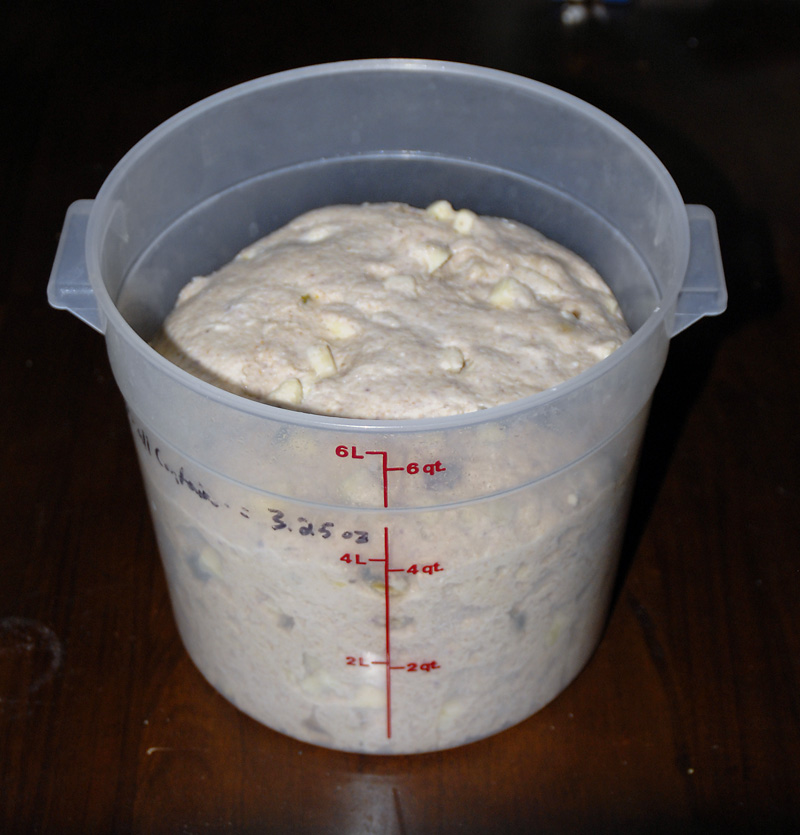
Gently divide the dough and shape it, then allow to proof covered until nearly doubled.
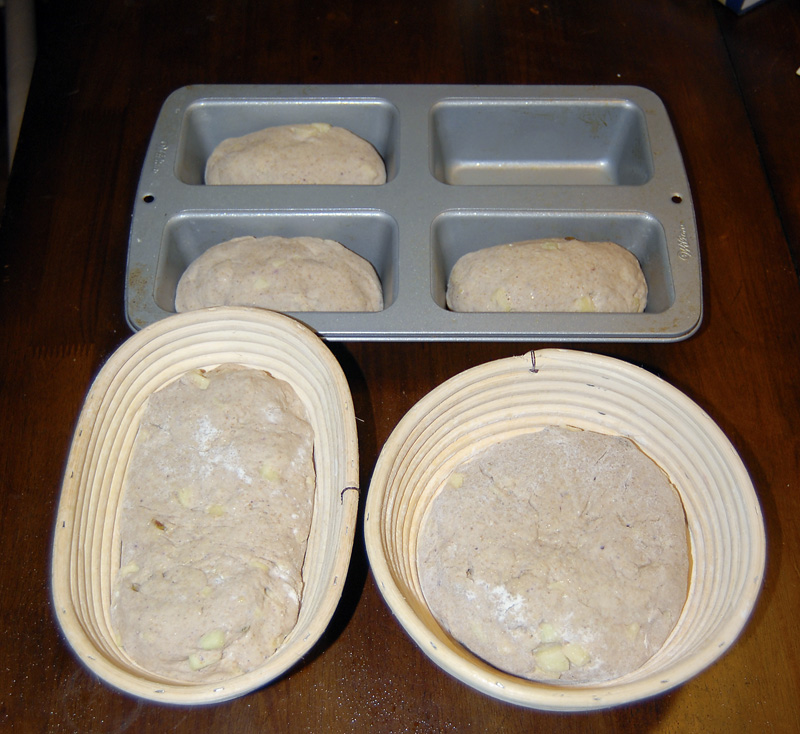
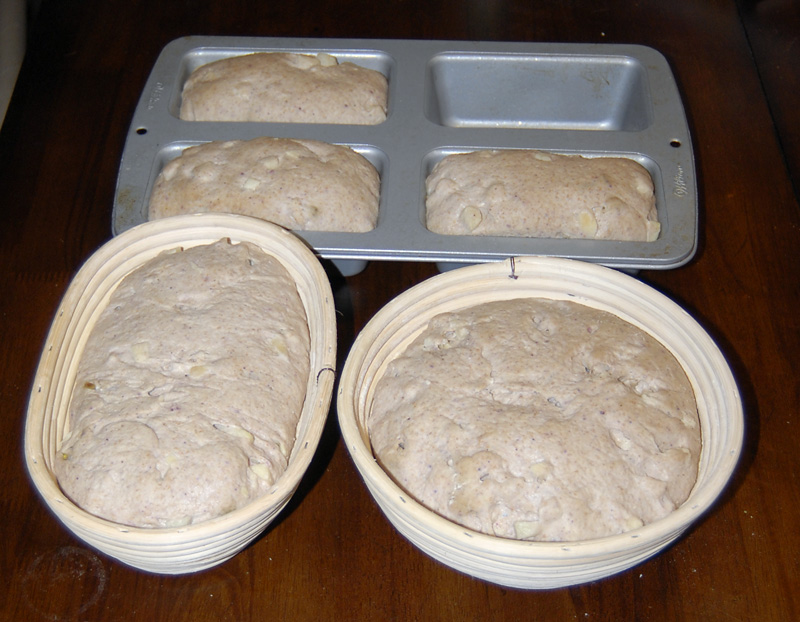
Score loaves and bake!


The result makes great sandwich bread -- no cheese is needed, just a couple of pieces of ham. It's also good toasted with honey for breakfast.
This is based on the Basic Sourdough recipe from Peter Reinhart's Bread Baker's Apprentice. BBA also contains the instructions for making your very own sourdough starter particular to your local environment.
Day 1: The Preferment
Start with a mixture of 45% hard red wheat, 45% hard white wheat, and 10% rye. Mill fine. (Alternately, any combination of unbleached bread flour, whole wheat flour, and rye flour that you like, just maintain the 10% rye ratio by weight.)


Take a few ounces of your sourdough starter, and mix in an equal weight of water and flour. Let it rise covered for 5-8 hours (it will double roughly), then put in the fridge overnight.



Day 2: The Dough
Dice up 3-4 apples. I used three Braeburns and a Granny Smith. Also weigh out 5 oz. of pistachios and 4 oz of blue cheese. Chop the apples up last, as they'll immediately start to oxidize and turn brown.



Add the water and preferment to the mixer and start it up.


Alternate adding the apple and your flour until all the apple (and about 2/3 of the flour) has been incorporated, then alternate adding in the pistachios and the rest of the flour, adding the blue cheese at the very end.


Turn the sticky mass out onto a well-floured cutting board and, using a dough blade and your hands, continue to knead and incorporate flour until it forms a fairly stiff, non-sticky dough.


Put it in a large bowl or tub and let it rise for 4-6 hours, until nearly doubled. Refrigerate overnight.


Day 3: Shape n' Bake
Remove the dough from the fridge at least two hours before shaping. It will have slowly risen more overnight.

Gently divide the dough and shape it, then allow to proof covered until nearly doubled.


Score loaves and bake!


The result makes great sandwich bread -- no cheese is needed, just a couple of pieces of ham. It's also good toasted with honey for breakfast.
- loydb's Blog
- Log in or register to post comments
Hi Loyd,
You mill and bake same day, I noticed.
I haven't taken to home milling yet, but I have a question about it: Shouldn't milled flour rest for a few days/weeks before it's used in baking? Or is it that the wheat berries themselves need resting after harvest? Or both? Or neither?
Also, any books you'd recommend on learning about home grain milling?
What milling machine is that in the pictures? (I haven't seen that one before.)
Those loaves look wonderful, by the way. Lightly-smoked ham and (Swiss?) cheese paninis on that bread would be tasty!
A recommend toy (for panini): http://www.waringcommercialproducts.com/catalog.php?pcID=89&products_id=239 (sadly, very hard to clean them, so I take it to the car wash!)
That would clash with the panini idea.
Thanks!
Sadly, there are no really good books about home milling that I've been able to find. There are some books that give it passing reference, but I suspect that the audience is limited.
I usually grind as I need it. I don't think flour is improved by oxidation. That said, if I have leftover, it keeps just fine, and many people swear by aging for a couple of weeks.
The mill is a Retsel Mill-Rite, IMO the best mill available for a home baker. The real stone wheels move slowly, and never overheat the flour like can happen with an impact mill. Plus, it doesn't sound like a jet engine, and you can adjust the grind from fine to loose enough to make cracked rye. You can also get a set of steel wheels with it that allow you to mill corn, nuts and other 'wet' sources. The down side is that it's expensive, and the people who make it are not particularly prompt or communicative. If you order one, ask for either "white" or "next available color" unless you're willing to wait many months potentionally. As it is, expect it to take 2-3 months to reach you. In fairness, they don't charge your card until it's ready...
I will chime in here too as I also mill my grains and I use them as soon as they come out of the mill...I want fresh.
My loaves are in demand - even the ones I consider failures.....
Pleasant Hill Grain sells mills; both manual and electric. (Loyds mill is manual - Retsel I think - unless he hooked a motor up to it....)
I use an electric - a KoMo and I highly recommend it if you mill grains frequently due to the ease of use and the clean up. Also allows for different coarseness of your grains.
Learning: Learn as you go but there really isn't much to is. Very simple process.
Others here who use mills are Proth5, Pips and Mango Chutney.....maybe others but I am not aware of them.
If you want fresh and the entire grain - you can't beat home milling.....my opinion only. Oh, buying whole grains is a whole lot less expensive than buying flour....A 50# bag of organic wheat costs me about $36.00.....If you bake a lot the mill will pay for itself in no time.
Janet
No, the Mill-Rite comes with a motor. You can order a separate kit to operate it manually.
Loyd,
I see you use PR's first book.
I am curious as to why you don't use his second - 'Whole Grain Breads' since you use freshly ground whole grains....
Janet
I do use his second book for some stuff -- there's a blog of his multigrain Struan a bit earlier in my entries. I've baked his BBA sourdough so many times that it's my go-to bread, and it is infinitely adaptable. I always retard the preferment overnight, and then retard the final dough overnight, and it seems to duplicate the effect of a soaker.